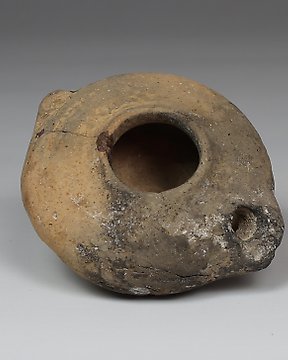
Islamitisch Terracotta Olielamp (Zonder Minimumprijs)
Nr. 83424819

Nr. 83424819

pottery oil lamp with three nozzles. The lamp comes from , Libanon middle East . Such lamps are commonly called Punic lamps. The word Punic derives from the Latin punicus, an adjective describing anything coming from the Carthaginian world.
Punic three nozzle lamps (as well as two nozzle lamps) were related to the so-called Hasmonaean lamps, which were also pinched bowl lamps. Both were derived from the Middle Bronze Age saucer lamps, and were found not only in Libanon Palestine, but also in Cyprus and North Africa.
Literature and comparanda:
A Comprehensive Catalog of Oil Lamps of the Holy Land from the Collection. Old City , 37-40;
, Ancient Lamps I: Greek and Roman Clay Lamps: A 2-5;lebanon- , Oil Lamps from Libanon : The private Collection .
The Development of the Lamp in, volume XIV) Munksgaard, 1963), 481;
, Ancient Lamps in the Schloessinger Collection (Qedem, Monographs of the Institute of Archaeology. The Hebrew University of volume 8). (1978), p. 67, nos. 274-277; p. 70, nos. 329-330;
.
Dating:
3rd - 2nd century B.C.
Size:
Diameter 7.8 cm.
Provenance:
Dutch collection, bought from Bonhams in London on 30 October 2003, part of lot 316; Bonhams provided the information that it comes from the collection of Professor Peter M.S. Jones, and that it was published by him in his book Collecting Ancient Lamps ).
Condition:
Intact with some encrustation, surface wear and scratching and some roughness to one of the nozzles; a label underneath, reading "228 Carthage (3 BC".
Zo koop je op Catawiki
1. Ontdek iets bijzonders
2. Plaats het hoogste bod
3. Veilig betalen